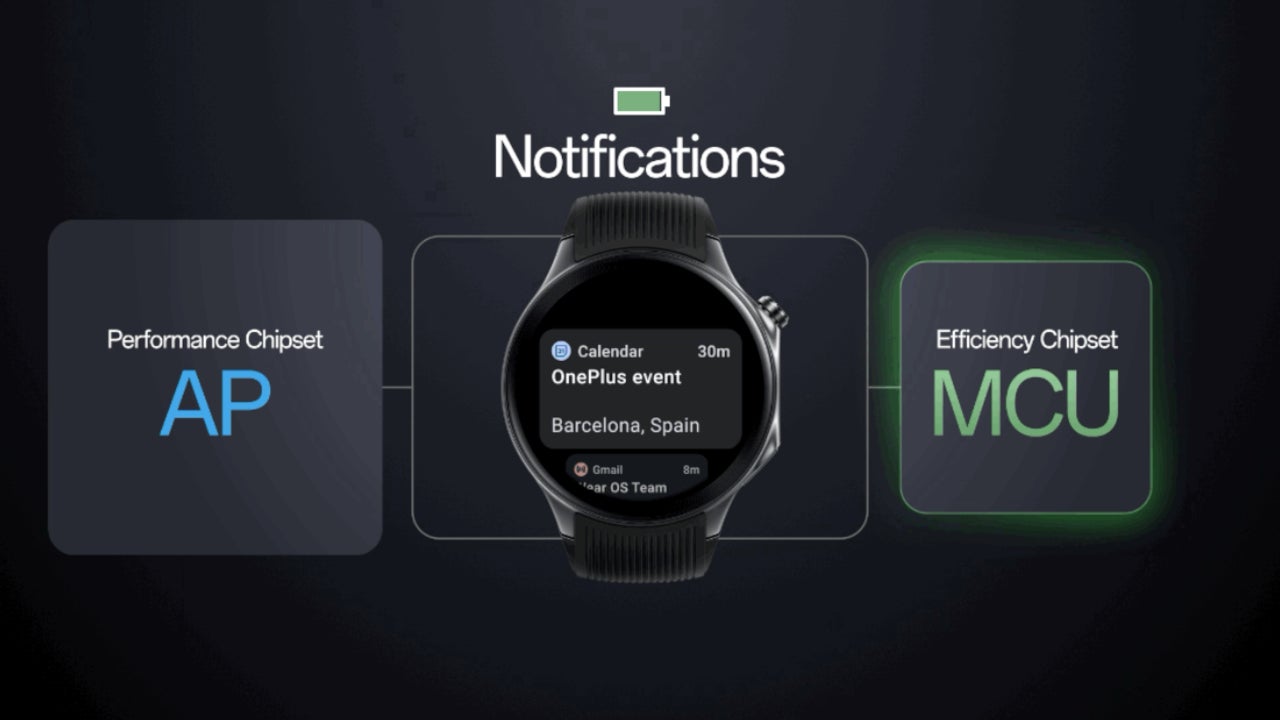
These important improvements have been implemented with the help of Google hardware partners, so they touch every aspect of the Wear OS development including design.
In a blog post published this week, Google reveals how it managed to improve on two key aspects: power and performance. One of the benefits that OnePlus Watch 2 offers to its users is extended battery life.
Thanks to the dual-chipset architecture allowing Google’s Wear OS 4 to get both chipsets to work in tandem, the OnePlus Watch 2 can provide up to 100 hours of regular use with all functionalities accessible in Smart Mode.
Besides that, the redesigned smartwatch architecture enables the Wear OS hybrid interface to intelligently switch between the MCU (low-power co-processor microcontroller unit) and the AP (powerful application processor), allowing the AP to be suspended when not needed to preserve battery life. Basically, it significantly increases power efficiency of the hybrid devices powered by Wear OS 4.
Another interesting improvement highlighted by Google is related to the connectivity and notification experience. According to Google, the new Wear OS smartwatches make use of the platform’s capabilities with the notification API in the hybrid interface to enable the MCU to process regular notification experiences and reduce the need to activate the AP.
One example provided by Google concerns the bridged notifications, which are now being delivered to the watch without waking up the high-performance AP.
Last but not least, the new Wear OS hybrid interface brings improvements to the fitness experience by adding more accurate workout tracking, automatic sports recognition and smarter health data monitoring. More importantly, all these improvements have been implemented without increasing battery consumption.
#Google #boosts #power #performance #latest #Wear #watches


